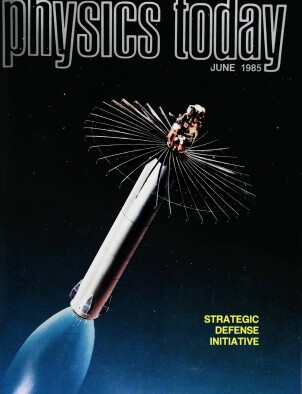The Differences Between One‐Dimensional and Three‐Dimensional Semiconductors
DOI: 10.1063/1.880978
The semiconductors with which we are most familiar, such as germanium and silicon, behave similarly in all three dimensions: Under most circumstances, electrons, for example, move equally well along the three crystal axes. There are, however, materials whose structure is so anisotropic that their properties as measured along one axis differ drastically from those measured in the other directions. In such materials the electrons may behave as if they were confined to move in only one or two dimensions. In particular, the quasi‐one‐dimensional materials have aroused a great deal of interest over the past decade. Thus, for example, a recent international conference on low‐dimensional conductors at Abano Terme, Italy, in June 1984, had about 500 participants and almost as many papers discussing quasi‐one‐dimensional metallic, semiconducting, and superconducting materials. (As we shall see, these are for the most part the same materials under different conditions of temperature, doping or pressure.)
This article is only available in PDF format
References
1. P. M. Chaikin, M.‐Y. Choi, P. Haen, E. M. Engler, R. L. Greene, Mol. Cryst. Liq. Cryst. 79, 79 (1982). https://doi.org/MCLCA5
Volumes 77, 79, 81, 83. 85 and 86 and volumes 117–120 of Mol Cryst. Liq. Cryst. comprise the proceedings of the Boulder and Abano Terme conferences on low‐dimensional materials and contain many other papers on one‐dimensional materials.2. For a recent review see S. Etemad, A. J. Heeger, A. G. MacDiarmid, Ann. Rev. Phys. Chem. 33, 443 (1982). https://doi.org/ARPLAP
See also the proceedings of teh Les Arcs conference, J. de Phys. (Paris) 44, C3 (1983).3. For a discussion of three‐dimensional organic materials, see L. Schein, C. B. Duke, PHYSICS TODAY, February 1980, p. 42.
4. F. DiSalvo Jr, T. M. Rice, PHYSICS TODAY, April 1979, p. 32.
5. H. Fröhlich, Proc. Roy. Soc. A 223, 296 (1954). https://doi.org/PRLAAZ
See also M. J. Rice, S. Strassler, Solid State Commun. 13, 175 (1973).https://doi.org/SSCOA46. M. J. Rice, Phys. Rev. Lett. 37, 36 (1976).https://doi.org/PRLTAO
7. A. Andrieux, H. J. Schulz, D. Jerome, K. Bechgaard, Phys. Rev. Lett. 43, 227 (1979).https://doi.org/PRLTAO
8. A. J. Epstein, J. S. Miller, J. P. Pouget, R. Comès, Phys. Rev. Lett. 47, 741 (1981).https://doi.org/PRLTAO
9. S. Mazumdar, A. N. Bloch, Phys. Rev. Lett. 50, 207 (1983).https://doi.org/PRLTAO
10. M. J. Rice, E. J. Mele, Phys. Rev. B 25, 1339 (1982).https://doi.org/PRBMDO
11. C. B. Duke, A. Paton, W. R. Salaneck, H. R. Thomas, E. W. Plummer, A. J. Heeger, A. G. MacDiarmid, Chem. Phys. Lett. 59, 146 (1978).https://doi.org/CHPLBC
12. W. P. Su, J. R. Schrieffer, A. J. Heeger, Phys. Rev. B 22, 2099 (1980).https://doi.org/PRBMDO
13. R. Jackiw, J. R. Schrieffer, Nuc. Phys. B190 (FS3), 253 (1981).
14. D. K. Campbell, A. R. Bishop, Phys. Rev. B 24, 4859 (1981).https://doi.org/PRBMDO
15. I. A. Howard, E. M. Conwell, Phys. Rev. B 27, 6205 (1983) https://doi.org/PRBMDO
and I. A. Howard, E. M. Conwell, J. Phys. (Paris) Colloq. 44, C3‐1487 (1983).https://doi.org/JPQCAK16. E. M. Conwell, Synth. Metals 9, 195 (1984).https://doi.org/SYMEDZ
17. A. J. Epstein, H. Rommelmann, R. Bigelow, H. W. Gibson, D. M. Hoffman, D. B. Tanner, Phys. Rev. Lett. 50, 1866 (1983).https://doi.org/PRLTAO
More about the Authors
Esther M. Conwell. Xerox Webster Research Center, Webster, New York.




